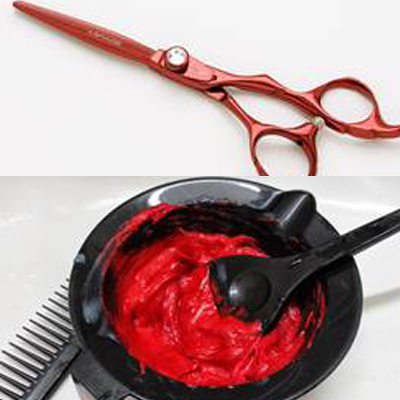Cut and Color…Can They Be Happy Together?
No matter what salon you work in, there are always different set ups and rules to abide by. For instance, you might have to share your station with another stylist and, in some cases, your clients. So what do you do when the colorist and stylist butt heads? A concerned BTC Member who asked to stay anonymous, came to us with this tricky conundrum.
“Help! I share a client with another stylist—I do the cut, she does the color—and I hate the color she does…it doesn’t work for the type of cut the client requests. I can’t tell if the client is happy with it or not—she hasn’t said. What do I do? The colorist is really nice, but her work is usually just mediocre. Do I keep my mouth shut? Or do I say something and risk hurting the client’s feelings or even possibly ruining a work relationship? Does anyone have experience with this?” We relayed Anonymous’ sticky situation to all of you—our amazing members—and here is what you had to say on the matter.
SEE ALL OF THE RESPONSES HERE!
Approach With Caution
One thing to keep in mind is that the colorist might be thinking the same thing about your cut. “Be open minded about the approach,” suggests Barbara Clark-Moody. “The client looking her absolute best is the highest priority, egos aside. Since she is a shared client, there should be a consultation with the colorist where you can share your concerns. Let her know your cut is not capturing her work as well as it could. Make the conversation about highlighting HER work.” As a fellow stylist, you should want to help each other become your best self. Also, don’t be afraid to hear (ask) her advice for you as well, Barbara suggests.
“You can always make suggestions, but NEVER condemn another stylist’s work, regardless of your opinion,” says Breanna Gottschalk. There are other ways of trying to help your client without insulting the work of another stylist. I totally agree that your client’s well-being is the most important thing, but condemning the work of another stylist (especially a co-worker) is very tasteless. Be creative with your efforts and keep yourself classy!”
The client must come first! “Respect the client’s wishes while maintaining your own creative and professional integrity,” says Shannon Alexander. “In this case, the stylist works in a departmentalized salon, which is quite common in many salons around the world. Stylists either focus on being a colorist or a cutter/stylist. Having good communication with your counterpart when working with a shared client is best…and just like any other coworker, communicating should be done in a respectful manner.” Perhaps the best approach is to simply talk to the client. Start with, “I just want to check in with you, is there anything you would like to change about your haircut, and/or haircolor?” The client may say ‘no, everything is fine.’ If that happens, Kimberly Benson Alberti suggests responding with, “Ok, I always like to check in and make sure the communication is open. If you ever see a picture of a haircut or color that you like, please bring it in and let’s talk, the possibilities are endless!” In this case, you’re allowing the client to tell you and the colorist what she wants.
Plus, you’re still a stylist, even if you’re NOT the colorist—if you think a different shade would look best—speak up! Try, “I’ve been thinking so and so would look great in a dark auburn, what do you think?” suggests Shannon. You could also test the waters with your client by saying, “Have you ever considered going darker, maybe an auburn shade? I think you’d look fantastic with that color!” That way you are letting the client decide. I’m not a fan of the “say nothing” approach. It’s your job as a professional to help your client look and feel their best.”
Silence is Golden
On the contrary, stylist Mike O’Neill says that it doesn’t matter what you think—the only opinion that matters is the clients’. “You could also ask how the client likes the color when you are cutting,” suggests Mike. Before you even think of approaching your colleague, consider the fact that the color might be exactly what the client wants. Natalia Raquel Flores agrees, “Although YOU don’t like it, perhaps it’s what the client wanted. As a colorist, it’s our job to know what looks good with certain cuts, face shapes, skin tones, etc. HOWEVER, we still have to follow what our client wants.”
“Keep your mouth shut and let the client come to you if she’s got an issue with the color,” suggests Jacki Verde. “Only then would I consult with the colorist. Focus on your relationship with the client, and the communication and trust will follow.”
Better Together
Mickey Long, who notes that he is a stronger colorist than he is cutter, suggests doing the initial consultation together. “That way, you are both are on the same page and can equally give your input. The cut is the foundation for the color, so I have always followed the cutters lead. I think it you are open and honest in the beginning, you can create something you both are happy with.” Ashley Frazee agrees, “I think that if you are working on a client together, you should absolutely do the consultation together and really communicate with each other as well as the client at the end of the service to make sure she loves it.”
Nelson Ross is also a big believer in a strong consultation. “You and your co-worker need sit down with your shared client and have a solid consultation about what the two of you have in mind about the cut and color. It seems to me like a miss communication with the two of you.” Ashley Erickson agrees, “Do your consultation together with the colorist, that way you know exactly what the client is asking for color wise, and the colorist knows what is being asked of cut wise.” During the consultation you and the colorist can both suggest different approaches to attaining the client’s desired result. “You could also make a point to say, “I love the color, how do you like it?” it shouldn’t be anything to feel bad about,” notes Ashley.
Regardless of whose side you come down on, the most important option is the client sitting in your chair. If you’re the colorist, you might feel like the stylist who is cutting is hacking up your clients hair and therefore, ruining your stunning color. Or you might feel the awful color is ruining your beautiful haircut. Either way, if you are sharing a client, you both need to find a way to communicate and work together to create an end result that you both are happy with, and most of all, that your client is happy with.







